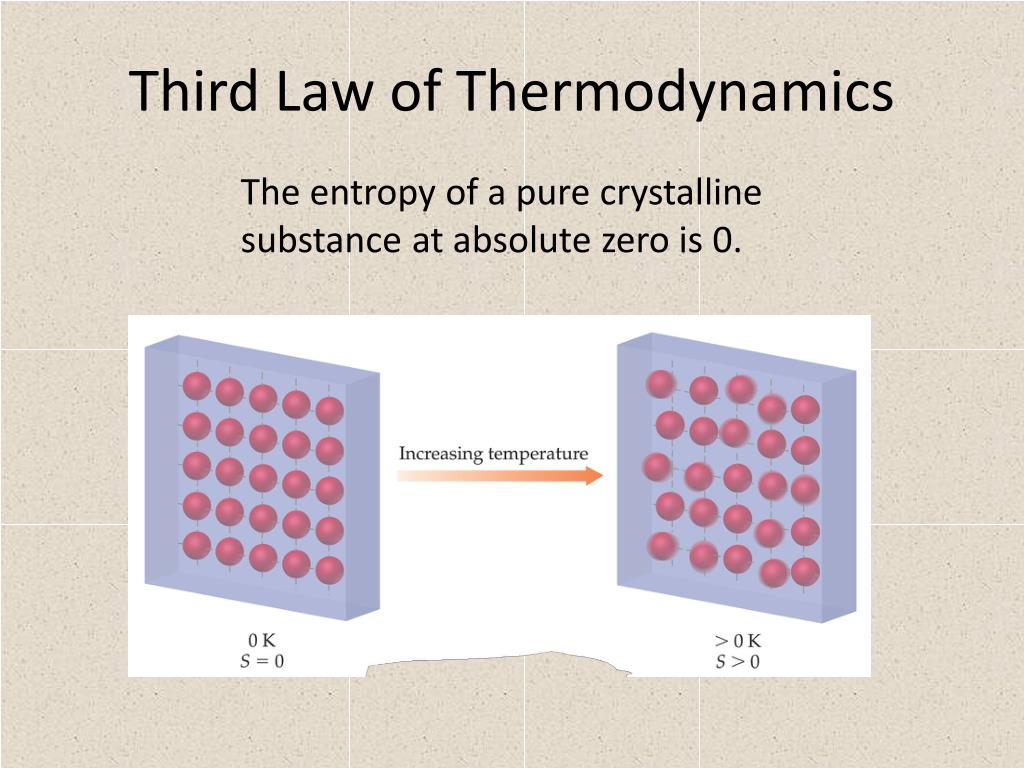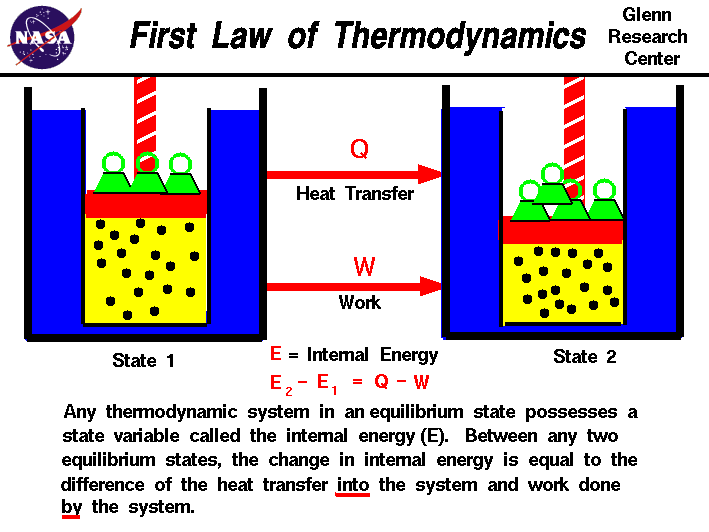

The second law is concerned with the direction of natural processes. Conceptually, the first law describes the fundamental principle that systems do not consume or 'use up' energy, that energy is neither created nor destroyed, but is simply converted from one form to another. It can be linked to the law of conservation of energy. The first law of thermodynamics provides the definition of the internal energy of a thermodynamic system, and expresses its change for a closed system in terms of work and heat. Heat flowing from hot water to cold water The second law of thermodynamics allows the definition of the concept of thermodynamic temperature, relying also on the zeroth law of thermodynamics. The first rigorous definition of the second law based on the concept of entropy came from German scientist Rudolf Clausius in the 1850s and included his statement that heat can never pass from a colder to a warmer body without some other change, connected therewith, occurring at the same time. Its first formulation, which preceded the proper definition of entropy and was based on caloric theory, is Carnot's theorem, formulated by the French scientist Sadi Carnot, who in 1824 showed that the efficiency of conversion of heat to work in a heat engine has an upper limit. The second law has been expressed in many ways. Statistical mechanics provides a microscopic explanation of the law in terms of probability distributions of the states of large assemblies of atoms or molecules. Historically, the second law was an empirical finding that was accepted as an axiom of thermodynamic theory.


An increase in the combined entropy of system and surroundings accounts for the irreversibility of natural processes, often referred to in the concept of the arrow of time. The second law may be formulated by the observation that the entropy of isolated systems left to spontaneous evolution cannot decrease, as they always arrive at a state of thermodynamic equilibrium where the entropy is highest at the given internal energy. It can be used to predict whether processes are forbidden despite obeying the requirement of conservation of energy as expressed in the first law of thermodynamics and provides necessary criteria for spontaneous processes. The second law of thermodynamics in other versions establishes the concept of entropy as a physical property of a thermodynamic system. Another definition is: "Not all heat energy can be converted into work in a cyclic process." One simple statement of the law is that heat always moves from hotter objects to colder objects (or "downhill"), unless energy in some form is supplied to reverse the direction of heat flow. The second law of thermodynamics is a physical law based on universal experience concerning heat and energy interconversions.


 0 kommentar(er)
0 kommentar(er)
